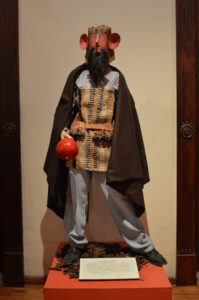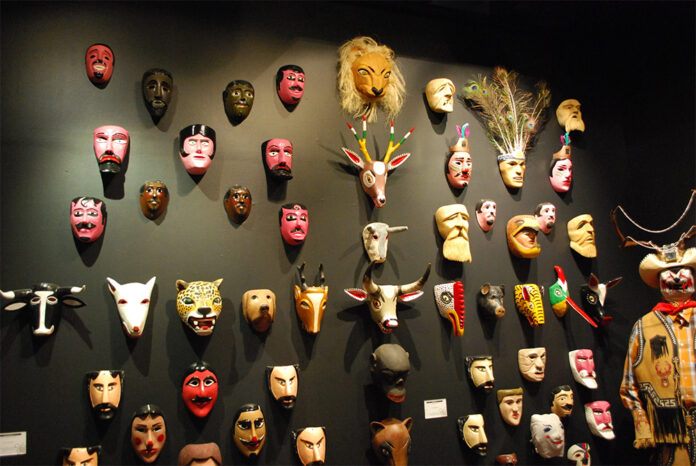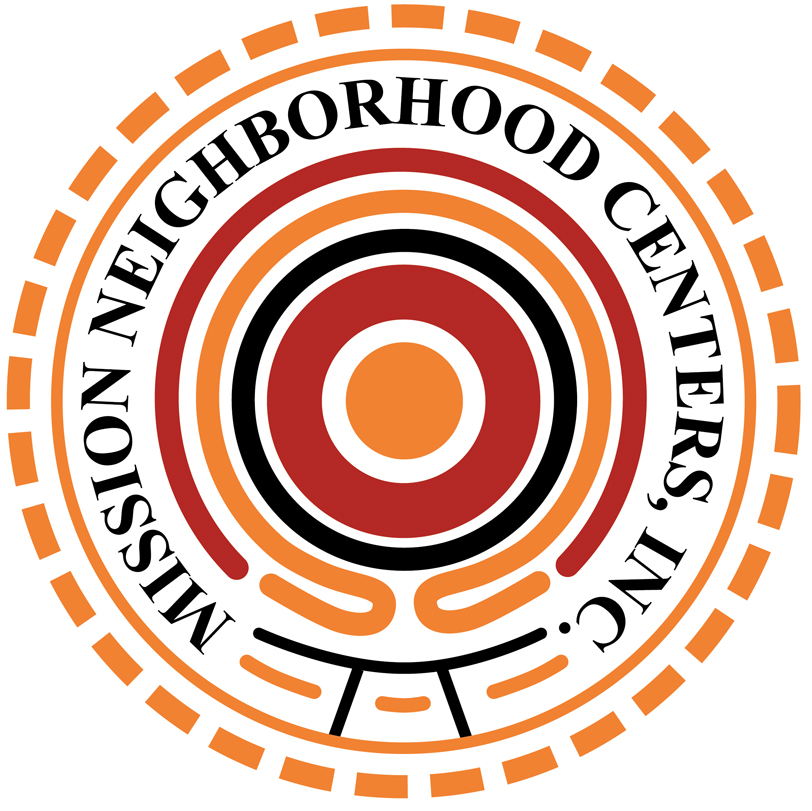Traditional Mexican masks are symbols of culture and tradition. Discover their history, significance, and where to buy authentic pieces
by the El Reportero staff
From pre-Hispanic times to the present, these pieces have been part of rituals, festivals, and dances that express the worldview of Indigenous peoples.
Today, traditional Mexican masks remain a symbol of identity, culture, and resistance that has transcended generations. They continue to be key elements in popular culture and art. Their craftsmanship follows artisanal techniques that vary by region, and their presence in festivals and traditional dances keeps one of the most fascinating expressions of Mexican folklore alive.
Origins and History of Mexican Masks
The ancient tradition of masks
The use of traditional Mexican masks has deep roots in Mesoamerican civilizations. For example, in Mexica and Maya cultures, these pieces were fundamental in religious ceremonies, theatrical performances, and war rituals.
Masks served as a means to invoke deities or assume new identities. Priests wore jaguar or eagle masks to absorb the strength of these animals and communicate with the gods.
Colonial influence and cultural syncretism
After the arrival of the Spanish, the Church attempted to eradicate the use of masks due to their connection to Indigenous rites. However, missionaries found them to be a powerful tool for religious teaching, integrating them into performances such as the Dance of Moors and Christians or nativity plays.
Thus, a cultural syncretism was born, allowing masks to survive, now adapted to Christian celebrations but retaining a distinctly Indigenous essence.
Traditional Mexican masks and their meaning
Each region of Mexico developed unique styles of masks, reflecting its history, worldview, and traditions.
Representative examples:
- Tlahualiles Masks (Sinaloa): Used in ritual dances dedicated to Saint James the Apostle.
- Devil Masks (Guerrero): Represent the battle between good and evil, featuring horns and terrifying details.
- Jaguar Masks (Chiapas and Oaxaca): Symbolize power and connection with nature, used in the Tecuanes dance.
Materials range from wood to leather, cardboard, and papier-mâché, depending on the artisanal techniques of each community.
 Mexican Carnival Masks: Color and Tradition
Mexican Carnival Masks: Color and Tradition
Carnivals in Mexico are an explosion of music, dance, and costumes, where masks play an essential role.
Most representative carnivals:
- Huejotzingo Carnival (Puebla): Reenacts historical battles with masked characters.
- Veracruz Carnival: Known for its colorful and festive masks.
- Tlaxcala Carnival: Features “camadas” dances with elaborate wooden masks.
In these events, masks reflect local histories, characters, and traditions, strengthening cultural identity.
Mexican Masks in Art and Popular Culture
Masks have inspired artists, filmmakers, and designers. Their impact has transcended ritual spaces to become symbols of cultural identity and artistic expression in various disciplines.
In cinema, they have starred in lucha libre films and cultural festivals, representing both tradition and Mexican creativity. However, to truly understand their history and evolution, several museums in Mexico have dedicated exhibitions to these impressive pieces.
One of the most important institutions is the National Mask Museum in San Luis Potosí, which houses one of the largest collections in the country. This museum displays masks from various regions, used in rituals, carnivals, and traditional dances.
Additionally, its collection includes both ancient and contemporary pieces, allowing visitors to appreciate the diversity of materials, styles, and symbolism that have accompanied these cultural expressions over the centuries.
Similarly, the Museum of Popular Art (MAP) in Mexico City also preserves an important collection of Mexican masks. Visitors can admire both traditional examples and modern reinterpretations created by contemporary artists.
Other institutions, such as the Zacatecas Mask Museum and the Museum of Popular Cultures, feature exhibitions highlighting the importance of masks within Mexican identity. These places offer a window into the past and present of traditions that remain alive in dances, festivals, and cultural expressions throughout the country.
Visiting these museums is an opportunity to understand how masks have accompanied Mexico through its history and continue to inspire new forms of art and expression.
Where to buy traditional Mexican masks
If you want to acquire an authentic mask made by Mexican artisans, here are some of the best places:
- Pátzcuaro, Michoacán: Known for its detailed wooden masks.
- Tonalá Market, Jalisco: A craft market with a wide variety of options.
- La Pila, Chiapa de Corzo: Specializes in Parachico masks, used in the San Sebastián festival.
Buying directly from artisans not only ensures authenticity but also supports the preservation of this tradition.
Traditional Mexican masks are not just works of art but also witnesses to the country’s history and cultural identity. Through them, communities have transmitted their worldview, myths, and sense of belonging from generation to generation.
Whether in pre-Hispanic rituals, vibrant carnivals, or contemporary festivals, these creations continue to captivate with their symbolism and beauty.



